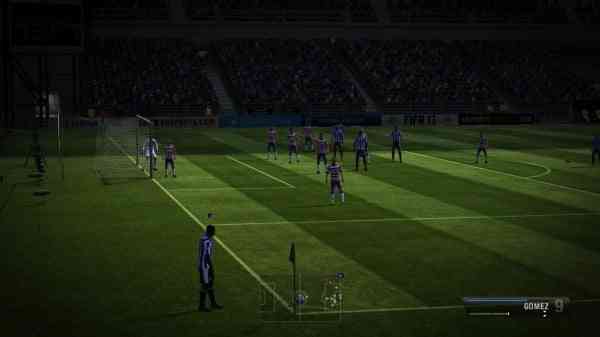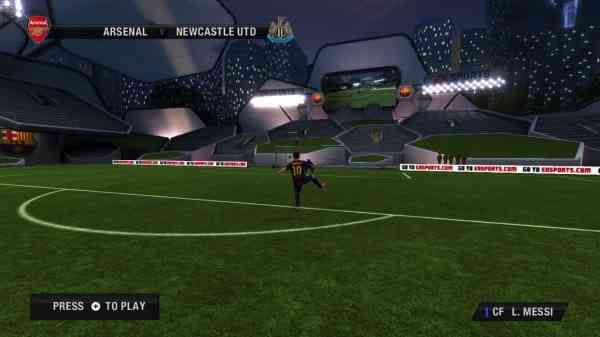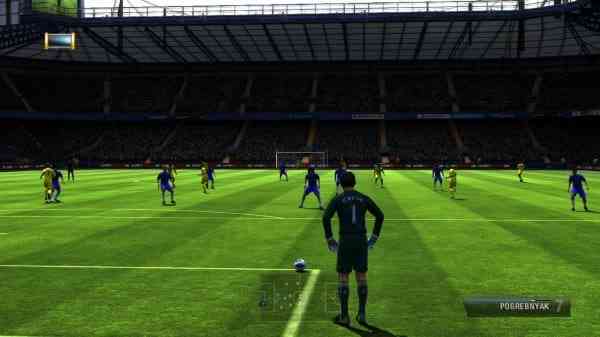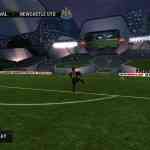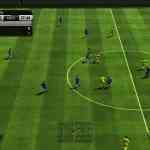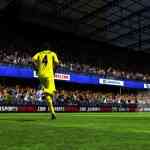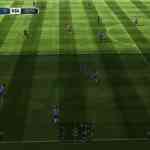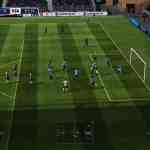There are a couple reasons I began to play less and less of my Wii. The system is motion based, or tried to be in so many ways. I am an older more ‘sit on my butt with one controller and play’ type of gamer. I am not that interested in waving Wii Remotes and using Nunchucks to control my gaming action even though I do admit I did find some games that I enjoyed with and without motion control. Secondly, the Wii is at its best a 480p machine; nice to look at on occasion, but going from 1080p on the other consoles back to 480p on the Wii was another reason Nintendo’s console fell out of grace with me? Well, the HD powered Wii U is now available. I am very much jaded on how the Wii U’s GamePad controller is going to fair, but it is a new console and I am excited to see how it compares to the others. FIFA 13 is my first review for the new console and I am indeed intrigued. Will I become a fan of the GamePad in sports games? Does the new Wii U have the power to compete? Read on.
As everyone knows one of the Wii U’s biggest selling features is the GamePad and its touchscreen. It is the biggest feature of the new Wii U and wielding it takes a bit of getting used to. FIFA 13 uses this feature in a variety of ways, making the game more playable and strategic. The GamePad screen also houses stats galore along with management of your team, but accessing some of these features while playing may require a bit of contortion and stretching of your fingers. This can be awkward while trying to play, but the result is pretty cool adding a new dimension to the gameplay. I really love not having to pause the game and physically go into the settings or menu and then return back to gameplay. I also like the ‘on-the-fly’ adjustments that make the game flow better; it is almost like barking in orders from the sidelines.
Having the touchscreen as a controller option also has a negative aspect, let me explain. Although I am not the hugest FIFA videogame player I do like to try each new version as they are released. I can tell differences from year to year or console to console for that matter. The Wii U version feels like the Coles Notes version of the other console versions. They play similar and have pretty much the same options, but having the GamePad screen is like cheating a little as I find the easy touch passes; well too easy. Balls go exactly where you want them, your striker can challenge for balls with minimal infractions, and more. The casual player will find that the touch controls allow you to target opposition players that you want to tackle, or areas or teammates that you want to pass to, with much ease and little if any skill.
Most of these commands are self-explanatory and once you have gotten used to the play mechanic, things should flow like hot butter on popcorn. Keep in mind you can look up at your TV to keep an eye on the action in real-time while you tap the GamePad’s screen to make your changes, and all the while controlling play with the analog stick and buttons. The set-up sounds confusing, but overall it becomes quite second nature. Of course you can also opt for the less involving and more traditional Wii U Pro Controller. This controller, at first look, will remind any gamer of the Xbox 360 controller. In fact if it weren’t for the diagonally reversed button/analog stick layout on the right side the controller would be a spitting image of the Xbox one.
The GamePad touchscreen is also used when taking corner kicks or free kicks, and it provides some really interesting results. Aiming for a specific player during corner kicks has always been a hit and miss affair with traditional controllers, but the GamePad lets you simply tap the man you want to receive the ball. Now it becomes up to him as to how the play develops or ends. I like the free kick or corner kick aspect, by having such accuracy it is almost like cheating…again. When taking a free kick you can hold the GamePad up to the TV, aim the cursor with the stick and pressing the button to nail a precise shot. This method can be finicky at first but after punching through the difficulty curve it can be effective. Do not get frustrated though as this will cause you to overreact and negatively affect your aim.
Additionally, when the ball is placed at center after a goal or start of the first or second half, you can move the GamePad around to get a virtual look around of the stadium and sky. The feature adds nothing but a bit of fluff to the game, but is cool to see. Another feature of the GamePad is the touchscreen shooting. To active it you must shake the controller or tap the right stick, then pick your spot and have at it. It is a good option for those that have trouble judging how firmly to press the A button but I should note that both methods can be challenging.
Some interesting options for Wii U FIFA is that it adds conveniences like shortcuts right from the GamePad. These allow you to skip navigating in menus and jump right into certain modes with just a tap of a button. You can also view friends from the GamePad with ease and see what they are playing, send invites, or message them. You can also get an overview of FIFA careers, including your own.
Speaking of career, it is only one of several gameplay modes within the game. While not as complete and robust as on other consoles it is fully serviceable. Some other modes include Tournaments, Co-op, Be A Pro, Virtual Pro, and Online. Additionally there are over fifty licensed tournaments from numerous countries available, from Germany to Korea to Mexico. Gamers can also create random tournaments with their own settings and teams too.
In Virtual Pro you create a player from the ground up and guide them through his/her playing career. You can complete different accomplishments across ten different classes, which can cover everything from shooting to clothing. The mode is similar to the Be a Pro in EA’s NHL series where you can track and contribute to one’s career. Upon completing accomplishments you are awarded attribute points to upgrade your players skills. This mode is perfect for the long-haul player that loves to tweak every portion of their created player.
The Co-op mode allows up to five people to play. One player is the manager on the GamePad (which directs the traffic) while the other players use a Pro Controller or Wii Remote to play. Players can choose to manage the match instead of actually playing, and watch the match unfold on the GamePad screen and TV. I must admit this is one of those modes for the real hardcore. I for one would much rather play. The Manager option is available for most co-op play modes; it does require a couple of players for most games.
Wii U FIFA’s online play and modes is where this package stumbles somewhat. The modes just do not compare to other versions with the omission of some of the main components found elsewhere. The Wii U version is missing things like Ultimate Team and Skills games. That being said, there are 10 game seasons, head to head custom games, and Friendlies. It is worth noting that the online community for FIFA 13 on the Wii U is smaller then what you may be accustomed too. I found few people playing, but the games I did manage to play ran quite well with only some minor hiccups and a few drops. The biggest problem I had was finding a game or an opponent to play against.
FIFA 13 on Wii U maintains the core gameplay mechanics seen on the Xbox 360 and PS3, for the most part. I noticed the First Touch Control appears to be absent, which is strange as lead-time for this game would have been pretty good and lengthy. That being said EA’s Player Impact Engine, Tactical Defending, and Precision Dribbling are included. Most gamers will probably not tell the difference from this version to any of the others, as they are pretty much on par. I have to say this is by far the best FIFA soccer game I have ever played on the Nintendo platform.
Nintendo’s shiny brand new Wii U has finally crossed into the HD zone. Games on the console are going to be all in glorious high definition, better than any other Nintendo console before it. As far as FIFA’s presentation goes, for me it is a mixed bag. On the surface the game looks fantastic, but there are few little bugs that bring it down a few notches. The games framerate is very inconsistent at times. During play it is generally at a constant and smooth speed, but things begin to chug and dip significantly when entering more close-up shots to the players. I found that even in the opening scenes at the beginning of a match the ugliness is quite high. Interestingly, I also found that there are signs of screen tearing in places too.
On the positive side the bugs are not a game breaker and many of the animations, cut scenes, stadiums, fans and pitches are all beautiful to look at. From a distance the game is stunning. The few players I could recognize are very accurately displayed in game, as are the rest of the rosters. Sound is also quite nice; hearing fans and the music tracks in Dolby Digital is very refreshing on a Nintendo console. Martin Tyler’s commentary is both familiar and very good, although it is nothing we haven’t heard already.
FIFA 13 on Nintendo’s new hardware is a surprisingly robust experience. Nintendo junkies will be able to fully appreciate the HD visuals and sounds in this game; however, there are a few issues that pop up and the omission of key features from other consoles make it more like FIFA 12.5. Gamers maybe turned off by the steep learning curve required to master the intricacies of the GamePad’s ability in a sports game, but FIFA 13 for the Wii U is a respectable first step in the right direction and has swayed me to sit and take a better look at the what the future may hold this brand new console.
